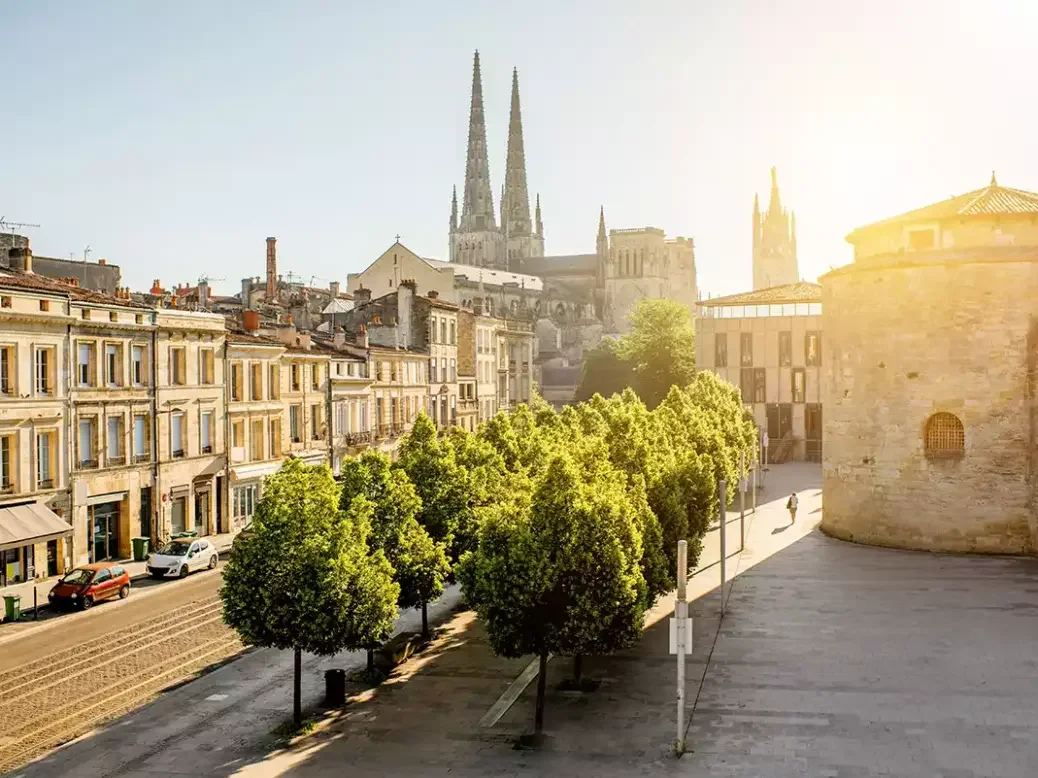
It was 29°C (64°F) in Bordeaux yesterday, Sunday, April 14, with azure skies and the morning freshness gifted by the Atlantic Ocean. A far cry from two years ago, when, a mere week earlier, I was driving through a miasma of low-clinging mist and vineyard bonfires, the latter attempting, unsuccessfully as it turned out, to dissipate the threat of frost. It’s never safe at this time of year, however; Bruno Lemoine at Larrivet Haut-Brion reminds me that today’s more than clement weather was also experienced in 1991, only to be followed, a full two weeks later, by a terrible outbreak of frost. In Bordeaux, you never can tell.
You certainly can’t, for that matter, tell how the market will react to the imminent 2023 en primeur campaign. A year ago, optimism was all pervasive, a triumph, maybe, of hope over experience, with a strong sense that the superb harvest would trump any vulgar and somewhat inconsequential commercial doubts. A magnificent vintage unfurled and with it, disappointingly, a relatively lackluster primeur campaign. The dial was already shifting. A year on, there is less elation about the harvest and, inevitably, appreciably less by way of optimism. Even if it is 29 degrees outside.
The quality of the ‘23s, it would appear from my first couple of days, is somewhat heterogeneous. The two significant mildew “episodes” (2018 and 2021 had but one apiece) were more significant to the properties which were logistically unable to address them at speed. The fact that the more famous appellations and the grander properties were able to act quickly, to treat incessantly, serves to explain why, in terms of yield at least, there is a sense of marked polarity in the region. Yields per hectare, therefore, were actually up in St Julien (50.3 hl/ha), in St-Estèphe (51.5 hl/ha), and even in Pomerol (43 hl/ha where one might have thought that Merlot’s early cycle would have been challenged by the mildew) but significantly reduced in the enclaves responsible for the bulk of ( red) Bordeaux wine, wines to be labelled as generic AOC (average yield 33.3 hl/ha) or as Bordeaux Supérieur (a mere 28.9 hl/ha).
It was nothing to do with meteorological conditions favoring privileged addresses in the Médoc or in Libourne (nature is not quite as judgmental as that) and all to do with practicalities. Mildew, as Olivier Bernard reminds me, can be “catastrophic,” but, if controlled, can engender greater concentration and therefore, in theory at least, finer wines. Domaine de Chevalier was not alone in adopting a methodology of sorting grapes which entailed three safety nets: firstly the sorting in the vineyard, then the optical sorter, and finally the “densitometric” (sic) machine, which ensures that all of the lighter (in this case mildew-affected) grapes are removed. By way of proof of the efficacity of this triple lock, I have certainly not tasted anything approaching tell-tale mushroom flavors in my early tastings. Out of sorts? Self-evidently not, as long as the sorting was carried out with diligence!
The style of 2023 Bordeaux has been described as “contemporary classic.” The weather was not without solar intensity late in the season (the third hottest overall of Fabien Teitgen’s 25 years at Smith Haut Lafitte), but there were no dramatic heat spikes and, importantly, no threat of drought. In addition, the high water table gifted by winter rains, allied to the wet June weather (which itself provoked the mildew) meant that the vines seldom struggled for nourishment and the patterns of evapotranspiration (very much a Bordeaux buzz word at the moment) were more manageable.
Given that some of the warmest weather occurred late in the season, the end of August harvest for the white grapes has resulted in a uniformly successful showing, with plenty of freshness and bright acidity in the wines. The reds enjoyed a warm and generally rain-free harvest, its protracted nature going some way to explain the heterogeneous nature of the wines. A tranche of the crop was not brought in before early October, a week before a significant period of precipitation. In Sauternes, most of the botrytised fruit was harvested over one or two tries at the start of October; the wines there are successful, impressively sweet and yet harmonious of disposition. The reds tasted thus far have tended toward more linear and chiseled profiles, both adjectives intended in a positive sense. Nothing dilute has been encountered, and, just as important, nothing remotely confected or ponderous. Contemporary classic indeed, even if that makes the wines sound like a new season’s range from a fashion retailer.
Over the next three weeks I shall be visiting eighty or so properties (and tasting from many more) to assess whether these opening salvos, these initial aperçus, are borne out by the quality of the wines themselves, tasted at leisure and in situ; much better thus than in the crowded exhibition centres in downtown Bordeaux. It will thereafter be fascinating to assess the extent to which the sometimes-hysterical siren journalistic voices—several calling for a 30 per cent reduction in primeur prices to “save” the category—are vindicated by the reality of the ensuing campaign.
One surely would wish to avoid the whiff of self-fulfilling prophecy but there does seem to be an ever-widening gap between the identity of the vintage itself and the commercial template employed to sell it. Out of sorts or broken? It is tempting to recall how the press reacted to the (admittedly not insignificant) mildew episodes, with words such as ‘decimation’ and ‘disaster’ splashed with abandon. The crop yielded just a little less than average overall, and the quality appears to be good to very good. Will that be enough to soften the Jeremiah calls for a radical overhaul of the en primeur system? Probably not, but we shall see. For the time being the sky remains blue and clear, even if tomorrow the temperature is set to dip by over ten degrees.






